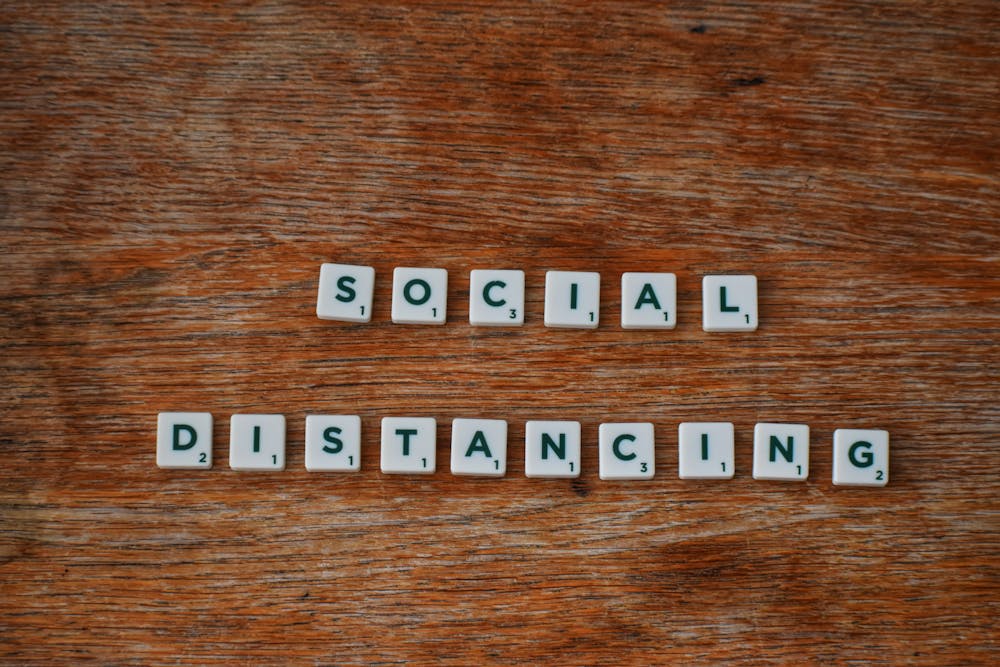When not researching COVID-19, Hopkins Economics Professor Nick Papageorge investigates factors surrounding adherence to human immunodeficiency virus (HIV) treatment regimens. For those living with HIV, taking prescribed medications has not only a personal health benefit but a public health benefit, as it decreases the likelihood of transmitting the disease.
However, especially in the early years of HIV research, these medications came with the trade-off of extreme side effects. Eventually, Papageorge found evidence that less-educated individuals who worked physically intensive jobs in construction or food service were more likely to go off their medication. For those unable to choose between their job and their treatment, this behavior wasn’t recklessness; it was utility.
Papageorge’s research has since been supplemented to focus on America’s most recent COVID-19 crisis. Only this time, the health behavior in question is social distancing.
Like taking HIV medication, social distancing has both a personal and a social benefit. However, social distancing also comes with difficult trade-offs. In a recent publication in the Journal of Population Economics, Papageorge and PhD student Matthew Zahn, among others, examined how income informs individuals’ precautions against COVID-19. They discussed their work in an interview with The News-Letter.
Zahn was focusing on industrial organization research related to health insurance companies when the first round of lockdowns began in March 2020. While some individuals associate the beginning of the pandemic with Dalgona coffee and ab workouts, according to Zahn, social scientists were already starting to notice the impact these restrictions would have on lower-income individuals.
“There was some problematic messaging about the pandemic early on,” Zahn said. “Everyone was sort of like, ‘Here’s a sourdough starter and all the stuff you can binge on Netflix.’ [But] there are a lot of people for whom sheltering in place may not be comfortable for a variety of reasons.”
Papageorge and Zahn’s study focused on survey data from 1,000 Americans examining their beliefs about the effectiveness of social distancing and their adherence to guidelines in April 2020. Top earners were 32% more likely to increase social distancing and 30% more likely to wash their hands or wear a mask.
The researchers attributed this to two factors that made it easier for top earners to stay home. For one, wealthier individuals were more likely to be able to telework and less likely to lose their job. In addition, access to more comfortable housing and/or open air such as a backyard makes staying at home more appealing.
Surprisingly, researchers found little correlation between pre-existing beliefs about the severity of COVID-19 and adherence to social distancing policies. Arguably, the principal predictor for adherence to public health guidelines was how financially feasible it was for individuals.
While the unequal cost of social distancing seems intuitive, the study has sparked interesting conversations online. On the one hand, the idea that social distancing is unrealistic for most Americans can be used in populist arguments. However, Papageorge and Zahn also noted criticisms that their work was attempting to justify reckless behavior.
One commentator in Forbes even questioned whether the observed pattern was due to economic factors or a lack of formal education among low-income earners encouraging them to make riskier decisions.
Papageorge discussed the claim that the team’s findings could justify unsafe behaviors.
“I’m not endorsing a thing. I’m just recognizing [social distancing] is going to be difficult, and policies that assume it’s not going to be difficult are going to be ineffective policies,” he said. “I’m really interested in the quiet majority of people who are somewhere in the middle. I think very few people believe that we can shelter at home indefinitely... I think relatively few people think we should just ignore the virus. I want to communicate to these people: How do we find a balance?”
Currently, the two are working to further their findings with new data about the impact of the Black Lives Matter protests on social distancing in the summer of 2020. For now, Papageorge and Zahn hope that their findings are able to inform policy for the duration of the pandemic and pandemics of the future.
In the paper, the team makes recommendations to public officials including incentivizing companies to support telework, paying individuals to stay home when telework is not an option and increasing open-air access by opening public parks.
Zahn remarked that one of the most impactful findings of the paper was the powerful relationship between open-air access and social distancing adherence across income groups and urban/rural distinctions.
“The implications of that are wide-ranging,” he said. “Opening public parks maybe isn’t quite so frivolous if it gives people somewhere to safely spend time outside. Or incorporating outdoor space in public housing if we want to be smart about preparing for the next pandemic.”
Papageorge corroborated this with a personal anecdote about the value of parks for his child during the pandemic.
“When the parks opened, that was huge for us. We had a place to go. [My child] could run around and be safe,” he said. “These are small things that make a big deal.”





